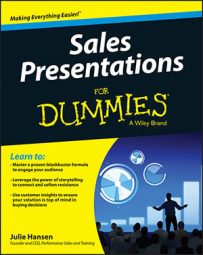More than likely you have multiple benefits that can help your prospect achieve his goals. In order to deliver the strongest value proposition possible, you need to prioritize your benefits to align with what’s most important to your prospect as well as showcase your competitive advantages. Follow these steps to determine which benefits best deliver value for your prospect
List your prospect’s goals and objectives in order of priority.
In your planning process you probably identified several goals or objectives that your product or service can address and some that you can’t. List the goals that you can impact by importance to your prospect. Make the top one or two the focal point of your value proposition.
List all of the benefits you offer for each goal.
Brainstorm all the ways that your product or service can help your prospect reach the top one or two goals.
Rank your benefit in terms of competitive advantage.
Compare how you stack up to your competition by ranking your benefits from 1–5 (one for a distinct competitive advantage, five for no competitive advantage.)
Select the highest-ranking benefit(s) for your value proposition.
Select at least one benefit that you rank first and work it into your value proposition. Doing so makes sure that your value proposition highlights at least one of your competitive advantages. This figure shows a ranking of benefits and competitive advantages by value.
![Ranking benefits and competitive advantage by value. [Credit: Illustration by 24Slides]](https://www.dummies.com/wp-content/uploads/493239.image0.jpg) Credit: Illustration by 24SlidesRanking benefits and competitive advantage by value.
Credit: Illustration by 24SlidesRanking benefits and competitive advantage by value.
The top line is a formula for aligning goals with benefits for your value proposition. The bottom gives you an example of goals and benefits by rank for a specific solution.

